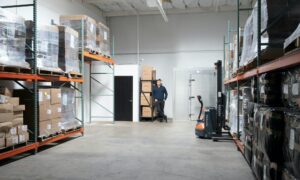Over the last several years, there has been a priority placed on designing buildings that are more eco-friendly, or “green,” due to continually rising greenhouse gas emissions throughout the world. In both the U.S. and the UK, there are certification programs that have been developed for green buildings—Leadership in Energy and Environmental Design (LEED) in the U.S. and Building Research Establishment’s Environmental Assessment Method (BREEAM) in the UK.
In a new study, Buildworld analyzed both programs and the buildings they inspected and certified to get a sense of green buildings in both the UK and the U.S. and how they stack up to one another. One of the most notable takeaways from the study is the number of green buildings in both countries: 13,842 in the UK and 73,208 in the U.S., specifically. There are different classifications when it comes to levels of certification in both countries, but the majority of buildings in each received similar certification levels.
In the U.S., 32.6% of buildings received gold certification, while 29.9% got silver, 11% got platinum, and 26.5% procured base-level certification. In the UK, 30.4% were awarded an “Excellent” classification, while 59.7% were certified as “Very Good,” 8.1% got a “Pass and Good” certification, and just 1.8% of the 13,842 green buildings nationwide got an “Outstanding” classification with their certification.
In the UK, the region with the highest number of green buildings was—perhaps unsurprisingly—England (12,576), and the UK county with the highest number of green buildings was Greater London (4,185). In the U.S., the West had by far the most green buildings (22,447), but the state with the most green buildings was Texas (11,553). Coming in second behind Texas was California, with 9,842 green buildings.
Overall, the UK had more green buildings due to its population compared to the U.S., and they also had more than the U.S. when it came to the type of building. Educational buildings were the most frequent type in the UK, while residential were the most common type of green building in the U.S.
Going green is undoubtedly the way of the future, as it should be given the severity of the climate crisis throughout the world. With buildings accounting for 40% of the U.S. and the UK’s carbon footprint, it’s encouraging that green buildings have become more and more common and that so many more are being built.
When you compare certified buildings in both countries, it’s clear that the U.S. has some work to do in terms of the number of certified green buildings compared to its population, but hopefully that will improve with time. With tax incentives set up to encourage sustainability through green building certification, there’s certainly no reason that we shouldn’t see those numbers improve in the U.S. over the next few years.
By Sean Kelly



































